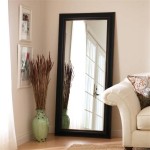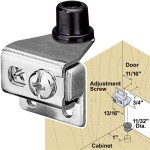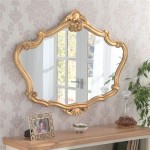Acrylic Painting On A Mirror: Techniques and Considerations
Acrylic painting on a mirror offers a unique opportunity to create artwork with reflective qualities. This medium allows for the incorporation of the surrounding environment into the painting, resulting in dynamic and interactive pieces. However, achieving successful and lasting results requires careful consideration of materials, techniques, and surface preparation.
The nature of the mirror surface presents specific challenges compared to traditional painting surfaces like canvas or paper. The smooth, non-porous glass inhibits the paint's ability to adhere effectively, potentially leading to peeling, chipping, or scratching over time. Therefore, understanding the properties of both acrylic paint and glass is crucial for producing durable and visually appealing artwork.
Surface Preparation: Ensuring Optimal Adhesion
Proper surface preparation is paramount before commencing any painting project on a mirror. The initial step is thorough cleaning. The mirror surface must be free from dust, fingerprints, grease, and any other contaminants that can impede paint adhesion. Use a glass cleaner specifically designed for mirrors or a mixture of water and vinegar. Apply the cleaner with a soft, lint-free cloth, ensuring complete coverage and removal of all residues. Allow the surface to dry completely before proceeding.
Once the mirror is clean and dry, consider using a primer designed for glass surfaces. Specialty glass primers are available in art supply stores. These primers contain additives that promote adhesion between the glass and the acrylic paint. Apply the primer according to the manufacturer’s instructions, typically in a thin, even coat. Allow the primer to dry completely; the drying time will vary depending on the specific primer used. This crucial step significantly improves the longevity of the painted artwork.
An alternative to specialized glass primer involves lightly sanding the mirror surface. This method creates a slightly rougher texture, providing more "tooth" for the paint to grip. Use fine-grit sandpaper (220 grit or higher) and lightly scuff the areas where paint will be applied. Avoid excessive pressure, as it can scratch the mirror permanently. After sanding, thoroughly clean the surface again to remove any sanding dust.
The choice between primer and sanding depends on the desired finish and the complexity of the design. For delicate or intricate work, primer may be preferable to avoid the risk of scratching. For larger, bolder designs, light sanding followed by careful cleaning can provide a robust base for the acrylic paint.
Selecting the Right Acrylic Paints and Mediums
The type of acrylic paint used can impact the final result of the mirror painting. Artist-grade acrylics generally offer higher pigment concentration and better lightfastness compared to student-grade paints. This means the colors will be more vibrant and less likely to fade over time. However, student-grade paints can be a viable option for practice or less permanent projects.
Consider using acrylic paints specifically formulated for glass or multi-surface application. These paints often contain additives that enhance adhesion and flexibility, reducing the risk of cracking or peeling. Read the product descriptions carefully to ensure the paint is suitable for use on glass. Experimenting with different brands and types of acrylic paint on a test piece of glass is recommended before committing to a large project.
Acrylic mediums can further enhance the properties of the paint. For example, a glazing medium can create translucent layers and add depth to the painting. A retarder medium can slow down the drying time of the acrylics, allowing for more blending and manipulation. A flow enhancer medium can improve the paint's flow and leveling properties, resulting in smoother, more even coverage. When selecting mediums, ensure compatibility with the chosen acrylic paints and follow the manufacturer's instructions for proper usage.
The color palette selection is also an important consideration. The reflective nature of the mirror can amplify the intensity of colors. Dark colors will appear deeper, and light colors will appear brighter. Understanding how the mirror will interact with the chosen colors is essential for achieving the desired visual effect. Consider creating a color swatch on a piece of glass similar to the mirror to preview how the colors will look in situ.
Painting Techniques and Considerations for Longevity
Applying thin, even layers of acrylic paint is crucial for maximizing adhesion and preventing cracking. Avoid applying thick layers of paint, as they are more prone to peeling. Allow each layer to dry completely before applying the next. This technique, known as layering, builds up the desired color and opacity gradually while maintaining a strong bond with the mirror surface.
Different painting techniques can be employed to achieve various effects. Dry brushing can create a textured, ethereal look, while stippling can produce a dotted, impressionistic effect. Detailing with fine brushes allows for intricate designs and precise lines. Experiment with different techniques to find what works best for the intended aesthetic.
When painting on a mirror, consider the potential for the reflection to distort or alter the appearance of the artwork. The surrounding environment will be visible through the painted areas, so the design should complement or enhance the environment. Using transparent or translucent paints can create interesting effects as the reflected light interacts with the painted surface.
Protecting the finished artwork is just as important as the painting process itself. Apply a clear acrylic sealant or varnish to the completed painting to protect it from scratches, UV damage, and moisture. Choose a sealant specifically designed for acrylic paints and follow the manufacturer's instructions for application. Several coats of sealant may be necessary for optimal protection, allowing each coat to dry thoroughly before applying the next.
Proper care and cleaning will also extend the life of the painted mirror. Avoid using abrasive cleaners or scrubbing pads, as these can damage the paint and the mirror surface. Clean the mirror with a soft, damp cloth and a mild glass cleaner. Gently wipe the painted areas to remove dust and fingerprints, taking care not to apply excessive pressure.
Finally, consider the placement of the painted mirror. Avoid placing it in direct sunlight or in areas with high humidity, as these conditions can accelerate deterioration of the paint. A stable, well-ventilated environment will help preserve the artwork for years to come.

Acrylic Painting On Mirror By Cristina Barretta Painted Art Ideas

Original Acrylic Mirror Painting Astronomical Artwork Hand Painted Eclipse Abstract Canvas Wall Art Pour

Mirror Acrylic Painting On Canvas 850

How To Paint A Mirror With Pictures Wikihow

Hand Painted Cloud Mirror Art Painting

Invitation To Paint With Watercolours On An Acrylic Mirror Day 25 31 Days Of Create Challenge Stories Play

Vintage Mirror With Acrylic Hand Painting Furniture Home Living Decor Wall On Carou

How To Paint Starry Night On Mirror With Acrylic

How To Paint A Mirror With Pictures Wikihow

Blue Mirror Acrylic On A Glass Painting By Eugene Kickioco Saatchi Art








